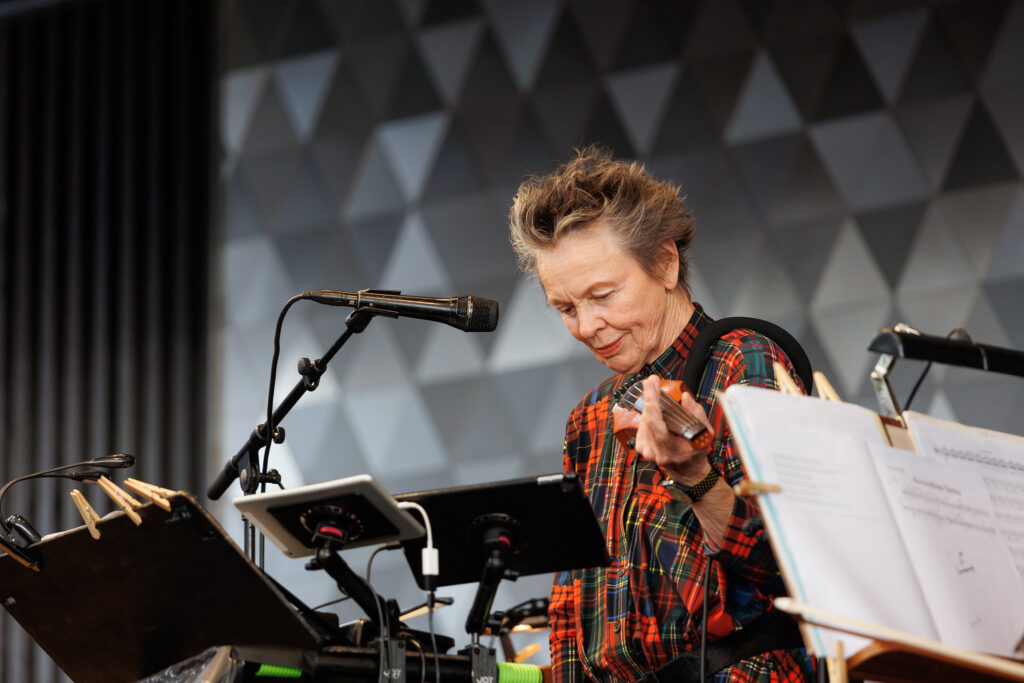2025 Categories

New Animation Art
Computer animation has been part of the Prix Ars Electronica since its inception in 1987, and it continues to evolve in an extremely dynamic way. This category focuses on works that explore and experiment with visual expression at the intersection of animation, art and technology.
Photo: Requiem for an Exit / Thomas Kvam (NO), Frode Oldereid (NO)
Artificial Life & Intelligence
The category “Artificial Life & Intelligence“ is dedicated to artistic practice and thinking related to all areas of Artificial Life, Artificial Intelligence, and Life Sciences, including artwork engaging with Biotech, Genetic Engineering, Synthetic Biology etc. as well as Machine Learning, Deep Learning, and any other form of Artificial Intelligence Research.
Photo: Guanaquerx / Paula Gaetano Adi (AR)


Digital Musics & Sound Art
Contemporary digital music & sound productions from the broad spectrum of electronica can be entered for consideration in the Digital Musics & Sound Art category, as can works combining sound and media, computer compositions ranging from electro-acoustic to experimental music, as well as sound installations.
Photo: Organism / Navid Navab (CA), Garnet Willis (CA)
u19 – create your world
u19 — create your world is the Prix Ars Electronica’s category for young people. It gives kids and youngsters up to age 19 (with residence in Austria) the opportunity to have a say about the world of tomorrow and to produce and present their concepts of and ideas for it.
Photo: Das Ziegenkäsemachen aus der Sicht der Ziege / Nico Pflügler (AT), Aleksa Jović (AT), Gilbert Gnos Productions (AT)

2026 Categories
In 2026, media artworks can be submitted in these categories:

New Animation Art
Computer animation has been part of the Prix Ars Electronica since its inception in 1987, and it continues to evolve in an extremely dynamic way. This category focuses on works that explore and experiment with visual expression at the intersection of animation, art and technology.
Photo: Requiem for an Exit / Thomas Kvam (NO), Frode Oldereid (NO)
Interactive Art +
The “Interactive Art +” category is dedicated to interactive works in all forms and formats, from installations to performances. At the top of the agenda is artistic quality in the development and design of the interaction as well as a harmonious dialog between the content level and the interaction level—that is, the inherent principles of interaction and the interfaces that implement them.
Photo: Bi0film.net: Resist like bacteria / Jung Hsu, Natalia Rivera


u19 – create your world
u19 — create your world is the Prix Ars Electronica’s category for young people. It gives kids and youngsters up to age 19 (with residence in Austria) the opportunity to have a say about the world of tomorrow and to produce and present their concepts of and ideas for it.
Photo: Das Ziegenkäsemachen aus der Sicht der Ziege / Nico Pflügler (AT), Aleksa Jović (AT), Gilbert Gnos Productions (AT)
Honors
With an honorary Nica, we thank the Visionary Pioneers of Media Art.

Visionary Pioneers of Media Art
Visionary Pioneers of Media Art is designed to honor individuals responsible for momentous, groundbreaking achievements—women and men whose artistic creativity and experimentation have not only laid the groundwork for media art as we know it today but also made key contributions to our current social reality with all of its specific forms of communication and cultural techniques.
Photo: Laurie Anderson, Credit: tom mesic
Since 1987
Since its inception, since 1987, the world has been constantly changing with the Digital Revolution and around the Prix Ars Electronica. New categories have emerged, existing ones have changed their focus, other areas have been reoriented. In the Prix Ars Electronica Archive, you’ll find all the prizewinners and categories since 1987.

